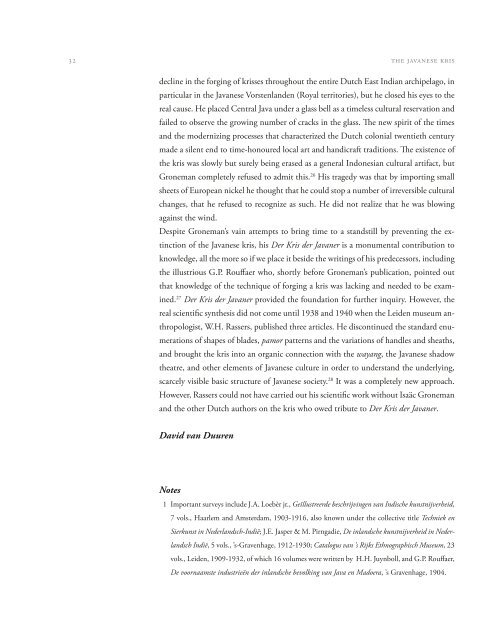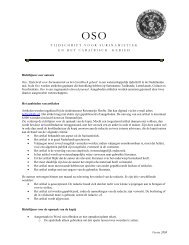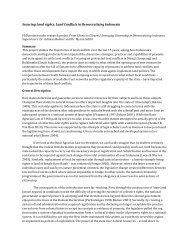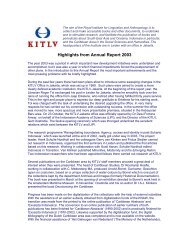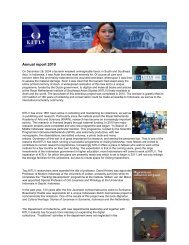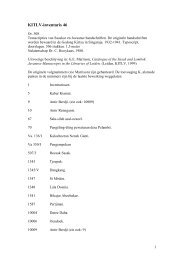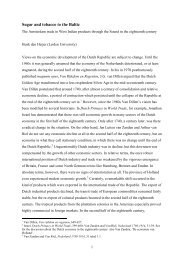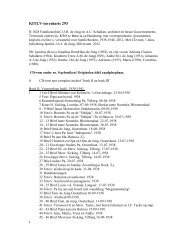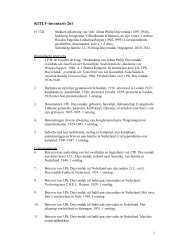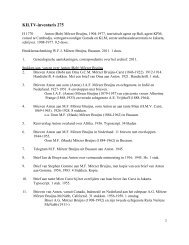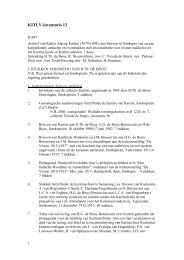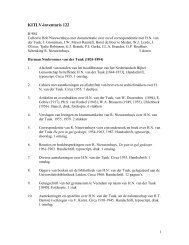You also want an ePaper? Increase the reach of your titles
YUMPU automatically turns print PDFs into web optimized ePapers that Google loves.
32 the javanese kris<br />
decline in the forging of krisses throughout the entire Dutch East Indian archipelago, in<br />
particular in the Javanese Vorstenlanden (Royal territories), but he closed his eyes to the<br />
real cause. He placed Central Java under a glass bell as a timeless cultural reservation and<br />
failed to observe the growing number of cracks in the glass. The new spirit of the times<br />
and the modernizing processes that characterized the Dutch colonial twentieth century<br />
made a silent end to time-honoured local art and handicraft traditions. The existence of<br />
the kris was slowly but surely being erased as a general Indonesian cultural artifact, but<br />
Groneman completely refused to admit this. 26 His tragedy was that by importing small<br />
sheets of European nickel he thought that he could stop a number of irreversible cultural<br />
changes, that he refused to recognize as such. He did not realize that he was blowing<br />
against the wind.<br />
Despite Groneman’s vain attempts to bring time to a standstill by preventing the extinction<br />
of the Javanese kris, his Der Kris der Javaner is a monumental contribution to<br />
knowledge, all the more so if we place it beside the writings of his predecessors, including<br />
the illustrious G.P. Rouffaer who, shortly before Groneman’s publication, pointed out<br />
that knowledge of the technique of forging a kris was lacking and needed to be examined.<br />
27 Der Kris der Javaner provided the foundation for further inquiry. However, the<br />
real scientific synthesis did not come until 1938 and 1940 when the Leiden museum anthropologist,<br />
W.H. Rassers, published three articles. He discontinued the standard enumerations<br />
of shapes of blades, pamor patterns and the variations of handles and sheaths,<br />
and brought the kris into an organic connection with the wayang, the Javanese shadow<br />
theatre, and other elements of Javanese culture in order to understand the underlying,<br />
scarcely visible basic structure of Javanese society. 28 It was a completely new approach.<br />
However, Rassers could not have carried out his scientific work without Isaäc Groneman<br />
and the other Dutch authors on the kris who owed tribute to Der Kris der Javaner.<br />
David van Duuren<br />
Notes<br />
1 Important surveys include J.A. Loebèr jr., Geïllustreerde beschrijvingen van Indische kunstnijverheid,<br />
7 vols., Haarlem and Amsterdam, 1903-1916, also known under the collective title Techniek en<br />
Sierkunst in Nederlandsch-Indië; J.E. Jasper & M. Pirngadie, De inlandsche kunstnijverheid in Nederlandsch<br />
Indië, 5 vols., ’s-Gravenhage, 1912-1930; Catalogus van ’s Rijks Ethnographisch Museum, 23<br />
vols., Leiden, 1909-1932, of which 16 volumes were written by H.H. Juynboll, and G.P. Rouffaer,<br />
De voornaamste industrieën der inlandsche bevolking van Java en Madoera, ’s Gravenhage, 1904.


